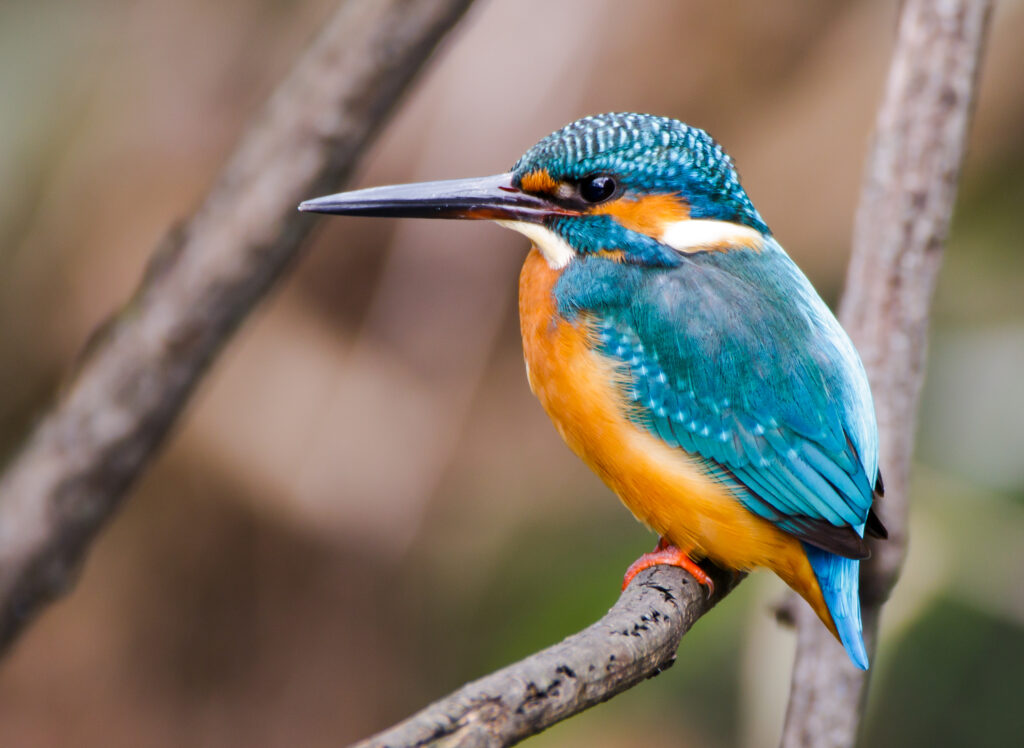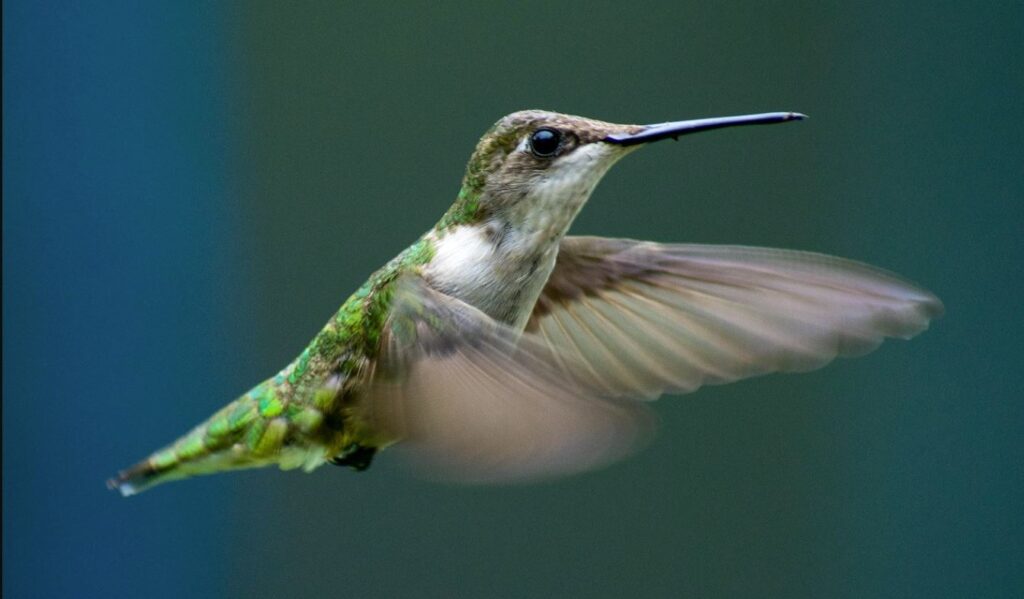DIFFERENCES BETWEEN HUMMINGBIRD AND A KINGFISHER
Without factoring in the relative size difference, the hummingbird and the kingfisher share some characteristics. Representatives from both bird groups tend to have colorful plumage. Some kingfishers have also exhibited the ability to hover in a manner that relatively resembles that of hummingbirds. But they do so only briefly and only to assess the distance of their prey.
So, what are the differences between kingfishers and hummingbirds?
1. SIZE
Depending on the species, mature kingfishers maybe somewhere between 17 cm to 33 cm in length. They tip the scales at an average range of 30 to 150 grams. The laughing kookaburra of Australia is the largest at around 45 inches in length and about a pound in weight.
On the other hand, a mature hummingbird is about 8 to 13 cm in length and weighs around 4 grams. Unlike sunbirds, female hummingbirds tend to be larger than males.
2. APPEARANCE
Kingfishers generally have colorful feathers. Their bills are long and pointed. Their bills are specialized to precisely hunt fish or to pick prey from the ground. Kingfishers have short legs proportionate to their body size. Kingfishers do not display significant sexual dimorphism.

Among hummingbirds, it is common for females to be larger than males. Males require smaller bodies for fewer energy requirements. This is because males must actively engage in energetic courtship rituals and compete with other males for favorable foraging grounds. Because females are larger, they have longer beaks to gain access to nectar better to support their higher energy requirements. Hummingbirds are non-passerine.

3. HABITAT
Kingfishers are found all over the world, particularly in the tropical and temperate regions. They are not found in extreme climates such as polar and desert regions. They fly over a wide range of predominantly rainforests with ample access to rivers and lakes.
Hummingbirds are restricted to North and South America, from Alaska to Tierra del Fuego. They can also be found in the Caribbean. They are found in greater numbers in tropical and subtropical forests.
4. DIET
Kingfishers are carnivores with a rather impressive variety of dietary options. It is a misconception that all kingfishers eat fish. Some species feed on fish exclusively, but most would also include another aquatic fare: frogs, crustaceans, water snakes, and worms. In rich forest ecosystems, they may also eat large insects such as crickets, grasshoppers, or even small rodents. When kingfishers hunt, they observe from their perch before diving down to scoop their prey. They would then return to their perch to feed. They kill their prey usually by hammering it with their beaks and then swallow it.
Hummingbirds rely on a steady supply of flower nectars. They need the sugar from nectars to fill their high energy demands and their brisk metabolism. Because of this, they have become highly sensitive to picking flowers where the nectars have higher sugar content. They have to be selective because they need to conserve their energy spent foraging. Since sugar alone is not enough to address their other nutritional needs, they also feed on spiders, flies, mosquitoes, and other insects.
5. BEHAVIOR
The kingfisher is aggressively territorial. This is quite remarkable since it generally maintains a rather large range. In terms of social behavior, kingfishers are monogamous, with a few exceptions. Interestingly, kingfishers generally prefer to build their nests on the ground. They excavate cavities on soft earth and mud along rivers and ditches. Some would even claim termite nests for their use.
One of the unique behaviors of hummingbirds is their courtship rituals. These courtship rituals are complex and are characterized by extreme aerial acrobatics. These courtship rituals are physically intense, requiring hummingbirds to constantly consume sugar. In the case of the Anna hummingbird, males begin their dance by flying to a height of about 35 meters above the female. It then nosedives at speeds of about 27 meters per second. Towards the bottom of the dive, it lets out a high-pitched sound. This speed is recorded to be the fastest among birds, in proportion to body weight. The diving sound is not a vocalization. It is produced by the wind passing through the male’s outer tail feathers. The nest of the hummingbird is shaped like a cup or a bowl.
6. EVOLUTION
Kingfishers belong to the family Alcedinidae. Kingfishers have always been distributed all over the world, as indicated by their fossil remains. The earliest known archaeological record of kingfishers can be traced to approximately 40 million years ago, in the Eocene period. Identical fossils have been found in such a wide range, from Australia, Europe, North America, and South America. The date at about 2 million years, these fossils are evidence of the adaptability of the kingfishers across all continents.
Hummingbirds belong to the family Trochilidae. Modern hummingbirds evolved some 42 million years ago, diverging from swifts. Fossil records dated around 30 million years ago indicate that the earliest hummingbirds may have come from Asia and Europe. Hummingbirds may have migrated to the American continents via a gap between Siberia and Alaska. They thrived in the new continent, particularly in South America some 22 million years ago. At this juncture, new species began to evolve from the original hummingbirds. They were able to reach the Caribbean some 5 million years ago.
QUESTIONS AND ANSWERS
DO HUMMINGBIRDS MAKE GOOD PETS?
No. These birds have high energy requirements and very specific diets that are impossible to reproduce in a more domesticated setting. Both hummingbirds and sunbirds also do not adapt well to enclosed spaces like cages and aviaries.
CAN KINGFISHERS BE DOMESTICATED?
No. Although kingfishers are among the birds featured heavily in various cultural depictions, they have never been domesticated. They are shy and do not have the temperament to thrive in contained environments. They are truly wild birds.
CAN A KINGFISHER HOVER THE SAME WAY A HUMMINGBIRD DOES?
Yes, but not as frequently. They have been observed to hover, but only to adjust their flight movements. They certainly lack the physical and metabolic features to sustain such a mode of mobility.
